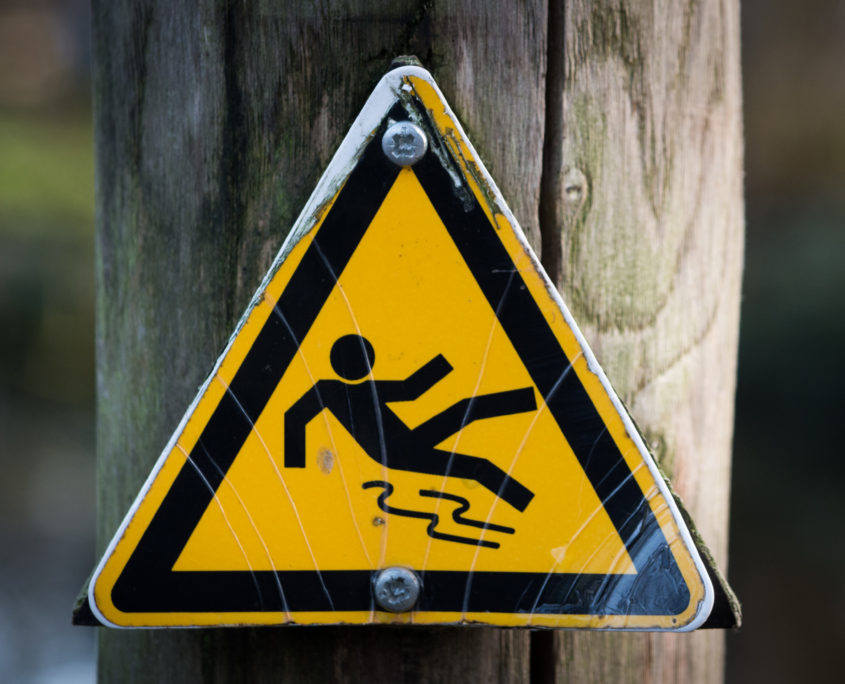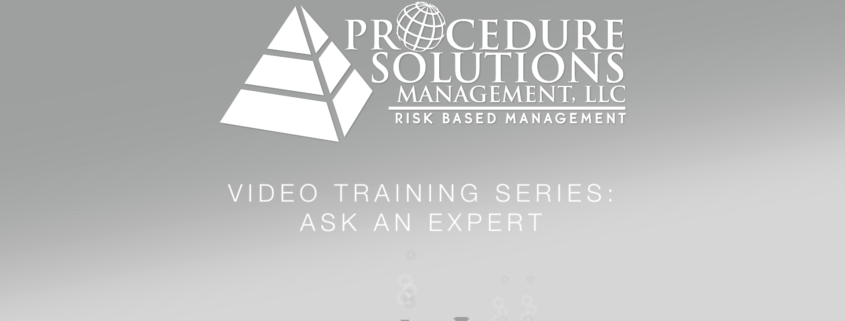Small Business, Big Impact
/0 Comments/in News, Technical Writing, Uncategorized, Writing Tools and Tips/by Sarah Pickett
The revitalization of our blog will discuss how, as a small business, we have been able to make a big impact.
Did you know that small businesses make up most of the American economy? In fact, more than 99% of U.S. businesses are small businesses!
This means that Procedure Solutions Management is part of the majority of the businesses in the U.S. While we may be considered “small,” this also means that we can make a big impact.
As a small company, we provide our training and consulting services to some of the world’s largest oil and gas companies. These services have helped ensure the safety of thousands of staff members and industry-leading businesses. Our most significant impact has been helping them have a more human-factored perspective that supports greater safety awareness in their daily operations and maintenance activities.
We have also taught over 20,000 procedure writers and reviewers how to become more human performance focused. Our training helps them correct the bad habits that they’ve fallen into while earning their PPA Procedure Writer Certification in the process.
In addition to this, we have spent the past 14 years providing staffing support to companies looking to create a much safer work environment for themselves and their colleagues.
Because we’re proud to be a small business with a big impact, we want to share some of our tips and tricks with you through the revitalization of our PSM Blog!
Each month we will have a guest writer from our team share knowledge on what they’ve learned throughout their career and at PSM. We will also spotlight our talented contract employees who will discuss life at PSM and their steps to becoming improved human performance focused writers.
We’re incredibly excited to share with you what we’ve learned in our 14-year journey!
Stay tuned for more updates, and please let us know if there are any topics you would like us to discuss!
By Sarah Pickett, Marketing Coordinator
If you like our content, subscribe to our blog using the link to the right of this post. Or, visit our services page for more information on our staffing, training, or consulting services.
Nuclear Promise – Procedure and Work Instruction’s Perfect Storm – Part 3
/0 Comments/in Technical Writing, Writing Tools and Tips/by Stephen McCord
What are the real costs associated with maintaining thousands of documents required for the execution of operating and maintaining the plant?
Recap.
In part one, we voiced concerns regarding the nuclear industry’s “Nuclear Promise” and it’s negative impacts on procedures and work instructions. These concerns were based on my experience working with nuclear sites across the country. In short, procedures and work instructions that were successfully used many times over a number of years are, in many cases, no longer meeting the needs of the “new” qualified, but less experienced nuclear workforce. The primary findings focused on the areas of insufficient level-of-detail and usability issues (human performance errors).
In part two, we discussed writing staff, which have historically consisted of individuals dedicated to supporting procedure development and work planning. These individuals are now being impacted by “Delivering the Nuclear Promise” through reorganizations, early retirements, and significant changes in the experience levels of the end user.
As a result of responses to efficiency bulletins associated with “Delivering the Nuclear Promise,” more staff are performing this work as a part-time collateral duty. In many cases, they have had very little or no training in human factored writing, and are unfamiliar with the station’s procedure and/or work package writing quality requirements. Even more frequently, we are finding staff lacking the experience needed to effectively use tools such as MS-Word.
Part 3.
In this final part, we will discuss considerations that should be evaluated in order to strengthen procedures and work instructions as a continued commitment to excellence in safety and reliability. The considerations are focused on the core goals of regaining or remaining competitive while executing this critical business function.
The most frequent response when dealing with the business function responsible for procedures is to reduce or eliminate positions and shift the procedure writing function to the line staff as a new collateral duty. This type of organizational change does see a near term or immediate budget reduction. However, it is particularly problematic because of the additional stress on existing procedures and work instructions caused by the aging workforce and the new staff taking their place This stress causes significant challenges to adequate level-of-detail and usability, or what is typically described as human performance issues. Thus, the staff working on these critical documents are ill-prepared to support the increased demands created from the newer workforce in addition to their their existing responsibilities to maintain document back logs at or below industry benchmark levels.
So where do we go from here?
To develop a strategy that will realize true cost savings without jeopardizing safety, quality or creating human performance error-likely situations, staff should first understand the real costs associated with maintaining thousands of documents required for the execution of operating and maintaining the plant.
The true cost is not identified by looking at the existing head count and associated labor hours responsible for procedure creation and maintenance and then redirecting these labor hours to other work groups. Instead, look at the cost per page for a newly created or revised procedure. In order to determine the true costs the following questions should be evaluated:
- How much time does it take per page to create or revise a procedure? (Typically the labor hours range from .5 to.75 pages per hour for new and 1.4 to 1.6 pages per hour to revise.)
- When evaluating page counts per hour, current staff should be looked at individually to determine gaps in performance. When gaps are identified, are the tools or familiarity with the tools causing performance gaps identifying the need to look at the quality of the tools and/or training to improve performance and create greater consistency. For example, some plants will use a fillable form when writing procedures, generating a significant amount of manual actions needed to create consistent documents. In contrast, other plants will utilize a macro-enabled MS-Word template that provides automated features to reduce the labor of formatting.
- Does the site have a Content and Format Procedure to provide consistent guidance when developing procedures? If yes, does this procedure align with the latest industry standard guidance found in PPA AP-907.005 Writer’s Manual? When consistent guidance is provided for the format and content development of a procedure than less creative input is used that can cause fluctuations in labor hours based on what is thought as best intentions.
- When enhancements to procedures or work instructions are requested, is a cost versus benefit performed? Is the actual cost and benefit truly understood or is every change request accepted independent of the cost?
- If staff manual actions to create job steps in the text editor areas of Passport, Maximo, SAP etc. has historically been the norm, has any consideration been given to use a macro-enabled “automated” MS- Word template and create the instructions in MS-Word and place as an OLE document in order to minimize the labor expense?
- Has the technical review process for procedures or work instructions been evaluated for the cost of performance in addition to compliance with quality requirements and/or gaps to industry standards? Once the cost is understood, are program efficiencies available that can be implemented to lower the cost and improve quality?
These are just a few of the many questions we use to help our customers in making sound business decisions in order to raise the quality of the work performed and a focus on lowering the overall costs. Do you know how much it actually costs to create or revise a procedure or work instruction – per page?
In conclusion, the ultimate goal should be to produce the highest quality product at the lowest reasonable cost. Are you making money or spending it because “this is the way we have always done it?” Are you focused on lowering the costs over the long term or just looking for a quick cost reduction now?
Procedure Solutions Management has the unique ability to help you see what you can’t see for yourself when evaluating measures that can be taken to drastically lower the costs for maintenance and upkeep of procedures and work instructions.
If you like our content, subscribe to our blog using the link to the right of this post. Or, visit our services page for more information on our staffing, training, or consulting services.
Nuclear Promise – Procedure and Work Instruction’s Perfect Storm – Part 2
/0 Comments/in Technical Writing, Writing Tools and Tips/by Stephen McCord
Delivering the Nuclear Promise. As the industry changes and old processes are streamlined, the level of detail and elimination of human performance errors in technical documents becomes even more critical.
Part 2 – Nuclear Promise – Procedure and Work Instruction’s Perfect Storm
In Part 1 – Nuclear Promise – Procedure and Work Instruction’s Perfect Storm, I raised a concern based on my observation of challenges with regards to procedure and work instruction quality. These quality challenges include (but are not limited to): inconsistencies in level of detail resulting from staffing changes associated with the aging workforce and organizational and process changes resulting from executing efficiency bulletins associated with delivering the nuclear promise.
Procedures and Work Instructions are at a critical crossroads today. Impacts occurring from the aging workforce and implementation of efficiency bulletins supporting Delivery of the Nuclear Promise are impacting the availability of experienced/trained resources needed to keep thousands of procedures and work instructions up to date.
Preventing human performance errors in the field requires high quality “consistently developed” procedures and work instructions. For many years and in many cases today, the focus has been on technical adequacy and nuclear safety. As the industry has matured, it was identified that a technical and nuclear safety focus alone was not sufficient in preventing procedure and work instruction user human performance errors. Over time, it was discovered that the usability of a document can be even more of an error-likely situation than a stringent focus on technical adequacy. With support from the Electric Power Research Institute (EPRI), Institute of Nuclear Power Operations (INPO), Nuclear Energy Institute (NEI),and Procedure Professionals Association (PPA) standards have been developed to create a human factored focus in order to eliminate negative trends the industry has experienced.
Through my interactions while traveling (consulting training, advising), I have observed several challenges that are very concerning:
- The average years of experience of operations and maintenance staff is rapidly lowering.
- Work instructions and procedures used many times previously are now resulting in stopped work as a result of insufficient detail.
- Experienced staff that once pushed for instructions written at the “what-to-do” level of detail (in an effort ensure maximum flexibility) are now being replaced at a rapid rate with qualified yet inexperienced staff that demand a greater level of “how-to-do” detail.
- Even supervisors, although qualified, often do not have the experience to answer in-field questions without referencing documentation that is frequently vague and interpretive.
In addition, requests for new or changes to procedures and work instructions are being sent to smaller numbers of procedure writers and planners and in many cases the upkeep of these documents has been handed back to the line staff and process owners as a collateral duty, second only to their primary job function.
These individuals, although they are technically qualified in their specific work discipline, often do not have:
- Adequate computer skills (MS-Word). For example planners experienced in Passport, Maximo or SAP are being requested to write Level One work instructions in MS-Word. In some cases the staff is provided training on a company MS-Word Work Instruction template although the template training was insufficient as it was assumed the planners were proficient in MS-Word and many are not.
- Adequate training with regards to content an format requirements. Little or no training has been provided on a stations procedure and work instruction content and format requirements or in many cases no content and format requirements exist.
- Human performance focus. No training or guidance has been provided that focuses the procedure writers and planners on the elimination of human performance error-likely situations. Too often the staff finds what looks like a well written document and they make it look like that, creating issues where human performance errors are carried forward.
In conclusion, the writing of procedures and work instructions is a critical job, not one intended to be performed as a collateral duty. This is, perhaps, even more pertinent today than it has been in the past. Eliminating human performance errors requires consistency in document development. When untrained staff is tasked with document development as a collateral duty or a reduced number of existing staff are taxed with more work than they can reasonably perform, document quality will suffer and human performance errors will occur.
As the industry is changing and old “bloated” processes need to be streamlined and the level of detail and elimination of human performance errors in technical documents becomes even more critical, we must recognize the need for consistency in document development. Achieving the level of consistency needed to prevent human performance errors requires the qualification and support of trained dedicated procedure writers and planners.
Join us for an additional discussion of this issue in Part 3 – Nuclear Promise – Procedure and Work Instruction’s Perfect Storm. This final segment will focus on suggestions and creative ideas supported by existing industry guidance on how to eliminate the risk of human performance errors in procedures and work instructions in support of Delivering the Nuclear Promise.
If you like our content, subscribe to our blog using the link to the right of this post. Or, visit our services page for more information on our staffing, training, or consulting services.
Ask An Expert – What do you mean by, “Human Factored”
/0 Comments/in Ask An Expert, Technical Writing, Writing Tools and Tips/by James Bennett
Ask An Expert – Episode 2 – What do you mean by, “Human Factored”?
Procedures have been around for a long time and there has been a lot of emphasis on making sure that they were “technically correct”. As things have evolved and the workforce has changed, industries have come to realize that the way in which end users read/follow the procedures is just as important as making sure the content is accurate. But, what does that really mean and how is it achieved? Does it matter where a warning is inserted? How does “Human Factored” affect the end user?
In this segment of “Ask An Expert,” our Founder and Chairman of the Board, Stephen McCord, answers the question, “What do you mean by, Human Factored?”
For more information on Technical Writing, subscribe to our blog using the link to the right of this post. Or, visit our services page for more information on our staffing, training, or consulting services.
Notes, Cautions, Warnings, Precautions, and Limitations – significant human performance failure opportunities?
/3 Comments/in Technical Writing, Writing Tools and Tips/by Stephen McCord
Notes, Cautions, Warnings, Precautions, Limitations play a significant role in successful procedure and work instruction execution.
When performing a procedure or work instruction, do your workers stop to read the Notes, Cautions, Warnings, Precautions, Limitations? If they are like a majority of users, then the answer is most likely “No!”
In many industries, there is a requirement to perform placekeeping (e.g., circle/slash, check, initial) on this type of information. Yet, even then, the content is often disregarded. Users tend to risk-assess the need to pause and fully appreciate or value the content.
So why the inconsistent performance and how does this performance result in challenges to human performance?
To answer this, let’s first understand the industry standard guidance that describes their use:
- Notes – Provides supplemental information [at the step level].
- Cautions – Attract attention to information that is essential to prevent damage to equipment [at the step level].
- Warnings – Attract attention to information essential to avoid loss of life, personal injury, and health hazards [at the step level].
- Precautions – Alert the procedure user to those measures that protect equipment, personnel, and the general public from abnormal or emergency situations. Applies generically to the entire document.
- Limitations – Statements that describe regulatory or administrative limits that the procedure is bound by. Applies generically to the entire document.
So, now that we are all on the same page regarding the usage of these critical human performance tools, let’s look at their content requirements:
- Written as short and concise statements.
- Written in a passive voice.
- Cannot contain an implied instruction or action step.
- Written such that, if removed from the procedure or work instruction, performance will not be affected.
In addition, for notes, cautions, and warnings the following rules apply:
- Placed prior to steps to which they apply
- Must be contained on one page and not expand onto two pages.
- Must appear on the same page as the impacted step
As you can see, the content requirements are pretty clear. So, why such huge performance inconsistencies?
From the assessments performed by Procedure Solutions Management, LLC (PSM), we have identified the following challenges:
- No guidance existed. A procedure or work instruction content and format procedure did not exist. As such, no guidance was provided to the technical writers on how to develop a human-factored focused procedure or work instruction; no guidance existed to establish quality standards.
- Guidance existed but was not enough. Where a content and format procedure did exist, the guidance was not aligned with industry standards.
- Lacked an understanding of the impact to human performance on the task. Technical writers were either unaware of the procedural content requirements at their site or underappreciated/unaware of the risk to human performance.
- No formal human factored writing training. Technical writers were either unaware of programmatic requirements or under-appreciated the risk to human performance as they did not understand the “why” behind the requirements.
- Human performance error likely situations of the Technical Writer. Technical writers were found during the editing process to have their own human performance error likely situations such that actionable or implied actionable content was added without recognizing the error they created.
- During document authoring it was found that the content of notes, cautions, warnings and precautions and limitations was more consistently developed if this content was added after all action steps were created. Place holders could be added for the location of the information to be added at a later time but no content should be developed until after all action steps are created first. This resulted in the development of higher quality action steps and an almost total elimination of actionable or implied actionable content being added.
- Blind compliance. Accepting Corrective Action Program requirements that specify specific content to be provided to fix program quality issues that conflicts with human performance requirements and best practices. This was especially problematic when no content and format procedure was present or was present but did not contain the industry guidance for the control of Notes, Cautions, Warning, Precautions and Limitations. As such, corrective action requirements are followed verbatim as nothing was in place programmatically to prevent a corrective action that would fix a quality issue but in of itself also lead to a challenge in human performance.
As a result of these challenges, what is the extent of condition? Here are a few industry examples that were identified to challenge human performance and the safe execution of the task:
Precaution (challenge: Actionable information)
- Inspect work area for spiders or other creatures/insects & exterminate as required to prevent personal injury.
Warning (challenge: Implied actionable information)
- Hand protection is mandatory for tasks that possess a risk of laceration or exposure to heat or chemical exposure. The correct gloves should be selected for handling sharp edged or heated materials, or other tasks that expose the hands to safety hazards.
Precaution (challenge: Boiler plate information resulting from a Corrective action)
- Safety rules, protective equipment, proper tooling, adequate instructions, and training are needed to provide a safe work environment. However, these alone are not enough to prevent accidents. An acute awareness of the surroundings, sound work habits, and commitment to safety will help ensure avoidance of accidents.
In contrast to those above, an example of a well written statement is provided below:
Warning – Electrocution may result from coming in contact with energized bus bar components while performing work in 4Kv Breaker Cabinet 1BKR4312.
In conclusion…
Notes, Cautions, Warnings, Precautions and Limitations play a significant role in successful procedure and work instruction execution. They can save lives and prevent equipment damage but only if written using high quality standards consistently in their format and content.
Interested in learning more about how Procedure Solutions Management can make your Human-Factored writing more successful? Please contact us for more information.
If you like our content, subscribe to our blog using the link to the right of this post. Or, visit our services page for more information on our staffing, training, or consulting services.
3 Tips For Starting a Procedure Project from Scratch
/0 Comments/in Technical Writing, Writing Tools and Tips/by Jennifer SmithAre you starting a new procedure project from scratch and having trouble getting started?
For many people at the onset of an important project (procedure or otherwise), starting is the hardest part. A large or complicated project can seem overwhelming or intimidating. Some people are slowed by analysis paralysis, focusing on specific details before having a grasp of their overall goals. Others start without ever thinking anything through and hope things just work out along the way.
Setting up a project for success is actually fairly easy with a little forethought and structure. Below are three tips to help you get a quick and sustainable jump on your new project.
-
Do your research.
Review all existing workflow process maps and compliance/business requirements for the procedures and processes you will be writing. The length or detail of the process maps is fundamental to the development of procedures that will meet or exceed the human factored procedure program requirements. While evaluating a process map, it is vital to receive 100% alignment from management and the subject matter experts. Having this alignment will prevent re-work and confusion down the road, as well as setting the correct level of detail. This research must be complete prior to building the step-by-step instructions. Failure to do this may result in embedding unnecessary human error likely situations as a result of direction changes that can occur during step reorganization.
-
Establish a plan with clear expectations.
It’s extremely important to establish a mutually agreed to foundation and framework of the project. This typically includes a charter and project schedule. This will ensure the controls are in place throughout the lifecycle of the project to guarantee a sustainable and successful plan. Start by developing a high-level schedule, or lifecycle, that each workflow process map (or procedure) will follow from beginning through finalization and publication. Consider research, writing, reviewing, incorporation of comments, and approving, as well as metric milestones as needed.
-
Assemble the right team.
Involving the right personnel is key to the success of a procedure project. The team can either be working face-to-face or via web conferencing. There should be a team lead (Project Manager – in some cases this may also be the procedure writer), procedure writers, reviewers, approvers and dedicated subject matter experts assigned as points of contact. Obtain a listing and contact information of key personnel and subject matter experts and their availability. Include phone numbers, email contacts and notes indicating task/level of involvement. Consider the availability of subject matter experts to address questions timely (in addition to their day to-day work load) as another important factor when assembling the team and creating the project schedule.
For more information on Human-Factored Writing and other Procedure Writing Tips, subscribe to our blog using the link to the right of this post. Or, visit our services page for more information on our staffing, training, or consulting services.
Critical Step – The Great Misconception!
/0 Comments/in Technical Writing, Writing Tools and Tips/by Stephen McCord
For any “high risk” industry, the ability to successfully execute tasks in a consistent, high-quality manner is as critically important today as it has ever been. The predictability of the outcome of these tasks is crucial in ensuring the safe and reliable execution of work processes. This is especially true for utilities. According to a March 2015 Electric Light and Power article, “more than one-half of the current utility workforce will be eligible to retire in the next 6-8 years.” A similar article from Power Engineering puts that number even higher.
The Bottom line is: The aging workforce issue and the resultant hiring of less experienced staff is guaranteed to place higher demands on the creation and/or maintenance (routine updating) of procedures and work instructions.
Which brings us to critical steps…
Many industries have (or are now adopting) rules to identify “critical steps” in procedures and work instructions during the creation or revision of these documents and/or just prior to work execution (e.g. during pre-job briefs).
A critical step, as defined by the Institute of Nuclear Power Operations (INPO), is:
“A procedure step, series of steps, or action that, if performed improperly will cause irreversible harm to plant equipment or people or will significantly impact plant operation.”[1]
If you are in an industry that does not have a “plant,” the significant impact could be simply the direct result of an unfavorable outcome that may include irreversible harm.
Industry guidance also provides the following additional guidance for consideration:
“Critical steps for a procedure or work instruction are identified during the task preview or pre-job briefing.
When preparing to execute a critical step, the performer stops to review the situation to ensure the following:
Current conditions match expected conditions. If job-site or system conditions are different than expected, the performer stops, contacts the supervisor, and resolves the difference prior to proceeding.
The expected results of step performance are understood.
The correct component is verified before the critical step is performed.
The focus is on the task at hand as each action is performed.”[1]
Where is the Misconception?!! Continue reading…
This industry guidance has been around for a number of years in the commercial nuclear industry and it has been fairly successful. However, as the workforce changes, a word of caution is needed.
It is important for personnel, and most notably supervisory personnel, to understand that the identification of a critical step using the guidance provided above may only help to identify where the failure is going to occur versus preventing irreversible harm.
Personnel and supervisors must be aware that every action step consists of three main parts: “Who, What, and How.”
I think we would all agree that during critical step identification the “who” is the person designated to perform the step; consequently ownership is clearly identified.
Where the misconception most commonly occurs is ensuring the critical step clearly communicates the correct level of detail to ensure the successful completion of the step; or simply stated: the balance between an instruction step that directs “what-to-do” or “how-to-do.”
At every step, the performer must clearly understand “how” to perform the task. When the step is identified as critical, it must be understood without question. No in-field decisions. No assumptions. So, despite having an understanding of the expected results, it is more imperative that the performer understands “how” the step is to be performed especially if the instruction is written at only the “what-to-do” level for detail.
Conclusion
To conclude, the misconception is this: despite industry efforts to proactively identify the location of critical steps, it is even more important that the critical step provides the correct level of detail that aligns with the needs of the performer. Supervisors need to ensure that not only is the expected result clearly understood, but also that the performer clearly understands “how” to perform the task and has the tools to be successful.
Author’s note: The Institute of Nuclear Power Operations guideline is used as a reference herein. However, the concept of a critical step is applicable to any high-risk industry.
[1] Institute of Nuclear Power Operations, “Guideline for Excellence in Procedure and Work Instruction Use and Adherence.” Rev. 0, June 2011
Interested in learning more about how Procedure Solutions Management can make your Human-Factored writing more successful? Please contact us for more information.
For additional details on how to determine the correct level of detail, check out Level of Detail – Not Just the Who, What, How. If you like our content, subscribe to our blog using the link to the right of this post.
How much does it cost to format a document?
/0 Comments/in Writing Tools and Tips/by Stephen McCordToday, more than ever, companies are looking for ways to reduce Operating and Maintenance (O&M) costs. Although it is often overlooked, the labor associated with creating and updating documents can be significant and expensive. Equipment modifications, changes in technology, and ever-expanding regulatory requirements are just a few of the driving mechanisms that can require significant changes to documents and drive up costs. That much is understandable, but, what if I told you that a significant portion of those labor hours are being devoted to formatting. Thats right, the time spent formatting documents is probably increasing your labor costs. Let me explain…
As a Supervisor for a commercial Nuclear Power Plant procedure group, I oversaw a group of writers that were all seasoned within their disciplines (operators, maintenance, process experts, etc.) but there were varying levels of MS Word experience among them. In order to determine how much time writers were spending just to format documents within MS Word (manipulating headers, footers or auto-numbering schemes, adding emphasis, standard blocks of text, or special formatting, etc.) I performed a simple evaluation.
The evaluation method: Each employee recorded the number of hours dedicated just to format the text within their document. Pretty simple, I’m sure you would agree, but the result was surprising…
In short, document formatting is expensive! The two most significant findings were:
- On average, 30 to 50% of the total document development labor hours were dedicated just to formatting. These results ranged due to the varying levels of MS-Word proficiency among the writers and the “as-found” issues within the document that were created over its own life-cycle (previous revisions)
- Many content technical errors were attributed to the distraction of formatting.
There are roughly 2,087 hours is a standard labor year. Formatting doesn’t need to account for half or even 1/3rd or your writer’s time.
In an effort to help companies reduce the labor costs associated with document formatting Procedure Solutions Management will provide a monthly “How-To Format” series through our blog to help reduce the cost and improve the quality of formatting within documents. The focus application will be MS Word (in our experience this is the most common or consistent platform used by many corporations.) The series will address common challenges associated with formatting, i.e. auto-numbering, headers, footers, adding graphs, tables, photos, etc.
Please subscribe and share to learn how you or your team can increase efficiency, improve document quality, and lower your document development costs.
Follow us on Facebook
Recent Posts
 Lunch & Learn: How Graphics Enhance ProceduresMay 25, 2023 - 12:53 pm
Lunch & Learn: How Graphics Enhance ProceduresMay 25, 2023 - 12:53 pm Tips for Effective Communication in a Remote Work EnvironmentApril 5, 2024 - 7:12 pm
Tips for Effective Communication in a Remote Work EnvironmentApril 5, 2024 - 7:12 pm A Comprehensive Guide to the Procedure Review ProcessFebruary 22, 2024 - 3:43 pm
A Comprehensive Guide to the Procedure Review ProcessFebruary 22, 2024 - 3:43 pm Lunch & Learn: Mitigating Errors During the Procedure Review ProcessNovember 6, 2023 - 4:16 pm
Lunch & Learn: Mitigating Errors During the Procedure Review ProcessNovember 6, 2023 - 4:16 pm Are Your Procedures Prepared for Extreme Weather Events?September 19, 2023 - 2:53 pm
Are Your Procedures Prepared for Extreme Weather Events?September 19, 2023 - 2:53 pm










![A critical step as defined by the Institute of Nuclear Power Operations (INPO) is: “A procedure step, series of steps, or action that, if performed improperly will cause irreversible harm to plant equipment or people or will significantly impact plant operation.”[1]](https://proceduresolutionsmgmt.com/wp-content/uploads/2016/11/powerlines-845x321.jpg)




